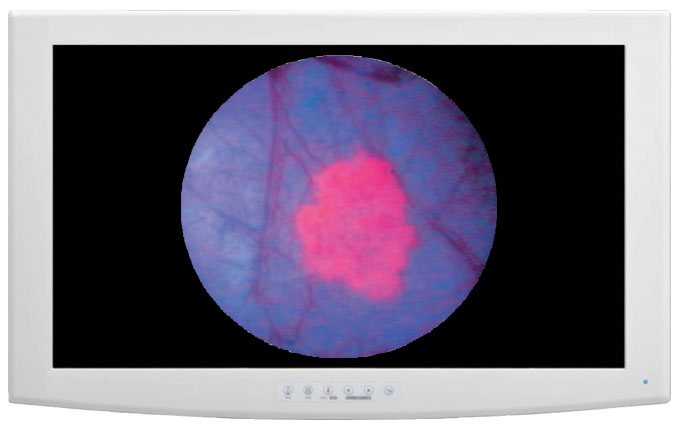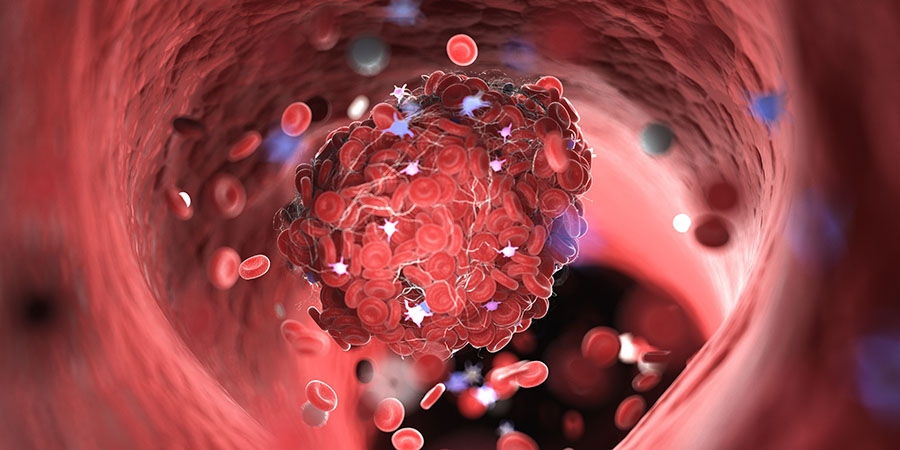The Life Sciences Report: Ben, you currently follow micro- and small-cap companies in the medtech space, but previously you were the founder of two tech startups. How does one know when an idea can be marketable?
Ben Haynor: One of my startups was more of a hobby that I hoped would turn into a company, and what I learned from that experience came more from the mistakes that I made. A lot of people think that if you build a better mousetrap—if you're slightly more clever than your competition—that will be enough. You find yourself thinking you've got greatest idea, you've thought through every aspect of what the user might want, all the features are great. . .and you wind up drinking your own Kool-Aid. Your product might have features that go well beyond what the competition has, but if the customer doesn't care about those features, or they are just incremental changes, you can only compete on price or the level of service. Your product might not be something that commands premium pricing. I fell victim to that.
TLSR: Are you saying it's not reasonable to think in terms of competing on price and service?
BH: No—competing on price or level of service is a completely reasonable business strategy. But when it comes to investing in a startup or starting a business, outsized returns are going to come from innovations that massively reduce the time it takes to accomplish something, hopefully by orders of magnitude.
"The fact that Cancer Genetics Inc. was able to get a practiced sales force to take its products to market is a very big deal."
For instance, one company I have under coverage (and also one of my two best ideas) is TearLab Corp. (TEAR:NASDAQ), with its TearLab Osmolarity System for detection of dry eye disease. What clinicians did prior to the TearLab test was stick a piece of litmus paper under a person's eyelid, pull it out and measure how many millimeters of moisture had collected. This older diagnostic method is called the Schirmer's test: It could take up to 10 minutes to complete and could be irritating to the eye. However, the American Academy of Ophthalmology has considered osmolarity testing the gold standard for diagnosing dry eye for a couple of decades plus. Prior to TearLab, there were no point-of-care tests available to do osmolarity testing. Additionally, the TearLab test has taken testing time down to 30 seconds or less, which is a couple of orders of magnitude in improvement. This is important because clinicians value their time.
The other thing I think helps—and would be something of a corollary—is developing a product that results in an immense improvement in accuracy or performance, such as coming up with a test that could improve predictive value. In this case, the Schirmer's test had a 30–40% predictive value; the TearLab system takes that up to 80–90% predictive value. It's innovative, and certainly good enough to take to market. I think TearLab is a good example of these ideas on the diagnostic device side.
TLSR: Your research focus is solidly in medtech—both diagnostics and medical devices. Is it preferable to improve on an idea by creating a technology platform that is more user-friendly, or cheaper, or broader in its application?
BH: I think in terms of the iron triangle, an old engineering adage that states if you're trying to build something, the tradeoffs are such that you're only going to be able to pick two of the three desired attributes—better, faster, cheaper—but never all three. This holds true in software development, an area where I have some experience.
"When it comes to investing in a startup, outsized returns come from innovations that massively reduce the time it takes to accomplish something, hopefully by orders of magnitude."
But in other areas, you may be able to have all three. For instance, Novadaq Technologies Inc. (NVDQ:NASDAQ), which I follow and have a Buy rating on, has a better solution for visualizing blood flow and perfusion. It's also faster than traditional methods, be it Doppler or some of the oximetry methods. The Novadaq system is also cheaper, as evidenced by published studies that suggest that hospitals can save a great deal of money by utilizing it in complex procedures where there are high complication rates and hospitals are ultimately on the hook. The Novadaq system is better, it's faster and it's cheaper for hospitals.
In my universe, I equate "better" to unique performance characteristics, and cheaper to a higher level of reimbursement, or less risk of creating complications that aren't reimbursed. If a company can fit these into its offering, it has a product that can become standard of care and part of a real business. I think Novadaq and TearLab can ultimately accomplish this, given enough time.
TLSR: Your firm recently released its 2014 Top Idea List, and you have two names from your universe of coverage on that list—TearLab, which we've already discussed, and Cancer Genetics Inc. (CGIX:NASDAQ). What thought processes go into each name on that list? Is it about which company has a sure thing in its pipeline or product portfolio? Or is it about which company can be the top gainer for the year? Or is it about relative safety of investor capital?
BH: Each analyst gets to make two picks. Most of us have chosen stocks that we think will be the biggest gainers in a given year. Last year, my picks happened to be the two companies that I have mentioned—Novadaq and TearLab—both of which did quite well. This year, I've gone back to the well on TearLab. I think it's still an underappreciated story, and there are only a handful of analysts who cover it.
My other top idea for this year is Cancer Genetics. I prefer underappreciated and underfollowed picks that I believe will demonstrate something in the coming year that will cause the Street to reevaluate, garner more interest from investors and ultimately drive the stocks higher.
TLSR: You initiated on this company back on May 21, 2013, when it was just under $12/share, with a target of $17.50/share. You presently have a $24/share price target. It was recently at about $19/share. Could you go ahead and talk about this company?
BH: Cancer Genetics is an oncology diagnostics company that had just a handful of salespeople one and one-half years ago. Over the past year or so it has gone public, raised a decent war chest of capital and has been able to hire more than a dozen experienced salespeople. Fewer than 1,000 people are selling into the oncology diagnostics space, so the fact that Cancer Genetics was able to get a practiced sales force to take its products to market is a very big deal. It's also something that will bear fruit this year.
"I equate 'better' to unique performance characteristics, and cheaper to a higher level of reimbursement, or less risk of creating complications that aren't reimbursed. If a company can fit these into its offering, it has a product that can become standard of care."
The company also continues to roll out new proprietary tests. Last year it launched a few new tests and updated some that were on the market already. The company's initial focus is hematological cancers, and it has four different proprietary microarrays that are able to give clinicians not only a diagnosis, but also a prognosis and assistance in treatment decisions. To be able to subtype the disease and determine that the oncologist should use a specific receptor tyrosine kinase inhibitor—or whatever the appropriate drug may be—is a very powerful service. That's particularly true in blood cancers, where you can get a recurring revenue stream because these cancers can mutate quite often. Every year—or even every three or six months, depending on how aggressive the malignancy might be—the oncologist might run a Cancer Genetics test to make sure that a treatment decision is correct at any given point in time.
The company also recently launched a proprietary florescence in situ hybridization (FISH)-based HPV-associated cancer test (FHACT). It's a DNA probe enabling determination of whether cervical cancer has progressed beyond cervical intraepithelial neoplasia (CIN) grade 2, which is considered the cutoff for determining whether the cancer is likely to progress further. The beauty of this test is that the conventional Pap smear sample is used, instead of doing a colposcopy, which costs $700–800 per procedure and may require the patient to be on pain medication and perhaps out of work for a few days. Now a clinician may forego the invasive procedure by using the Pap smear sample and running the Cancer Genetics FHACT test for $400–500. This saves the payer money, is also convenient and pain-free for the patient, and gives the clinician a good diagnosis.
TLSR: I note that you have Cancer Genetics doing $20.3 million ($20.3M) in revenue in 2014. For 2015, you forecast revenue of $48.9M, while growing gross margins from 37.2% in 2014 to 54.4% in 2015. I understand this company is a top pick because of its proprietary tests, but you really have to get out and show these services to pathologists—to oncologists, to OB/GYNs and to hospitals. How do you get that kind of growth?
BH: It is stunning growth. But if you look at the historical revenue ramps of some other companies that have had proprietary tests, they're not all that dissimilar. In fact, a number of them have grown more quickly than I project Cancer Genetics to grow.
I think Cancer Genetics' growth potential is really due to a combination of factors. You have the proprietary tests, as you mentioned, but the company also has relationships with a couple of biopharma companies— Gilead Sciences Inc. (GILD:NASDAQ) and Roche Holding AG (RHHBY:OTCQX)—that seem to be ramping up its backlog. A year ago, there may have been $1M or $2M in biopharma backlog. Now, it's more like $13M, and I believe that will continue to grow over the next 12–18 months. Plus, the company always has the opportunity to deliver another of these tests—or several—to help drive growth. It is a matter of driving the adoption of the proprietary tests that the company has already developed, and layering on new ones.
Cancer Genetics does have a joint venture with the Mayo Clinic, which is using next-generation sequencing (NGS) to go after lung cancer, multiple myeloma and follicular lymphoma. You should start to see some new and improved panels in the next year or year and a half. The company is going to continue to add new panels and proprietary tests; that activity and exposure will bring along some nonproprietary work as well, which will help drive the company's revenue growth to the levels that I've estimated, hopefully.
TLSR: Is there another growth possibility for Cancer Genetics? Its business is primarily on the East Coast and in the Midwest currently. Is the company thinking about the West Coast?
BH: Yes, I think the company is definitely thinking about that. A West Coast lab would certainly help. I would expect Cancer Genetics would probably acquire a small lab that already has its certifications in place. It's easy enough to do, and quicker than setting up a brand new lab, which means having all the inspections and the certifications before you can open it. If Cancer Genetics can buy one that's already in place, that's a pretty good expenditure of some of its cash.
TLSR: I'm noting that you follow diaDexus Inc. (DDXS:OTCMKTS). You have it rated Buy, which is interesting because the company seems to have lost a potential revenue stream with the failure of GlaxoSmithKline's (GSK:NYSE) phase 3 STABILITY trial testing darapladib, an Lp-PLA2 (lipoprotein-associated phospholipase A2) inhibitor, to prevent major adverse cardiovascular events. The idea was that if this enzyme, Lp-LPA2, was elevated, you could give this drug to reduce a patient's risk of heart attack. Would you discuss why this company is Buy-rated after the failure of that GSK trial?
BH: Sure. DiaDexus' PLAC Test basically gives a patient an idea of how likely it may be that plaque within the coronary arteries might rupture. That, of course, causes heart attacks and strokes.
TLSR: You're talking about vulnerable plaque exfoliation, a deadly event.
BH: Yes. I think this is a great test to offer to people. One of the ways that diaDexus has been successful over the past few years is that some specialty cardiovascular labs have bundled the PLAC Test with a number of other tests to give a more in-depth picture of a patient's cardiovascular health and risk. These bundled tests are then sold to doctors. DiaDexus only has a 13- or 14-person sales force selling directly to doctors, but the salespeople also sell to these cardiovascular specialty labs, which then take the product out to many more physician practices. Collectively, diaDexus may benefit from as many as 500 salespeople who work with the big-eight nationwide cardiovascular specialty labs—none of which is public—taking its tests out to primary-care doctors. During 2014, diaDexus will probably sell a couple million PLAC Tests.
"I prefer underappreciated and underfollowed picks."
The PLAC Test looks at the Lp-PLA2 enzyme, which is the subject of two GSK trials, one of which was the STABILITY study (NCT00799903) that you mentioned. It did indeed miss its primary endpoint. However, the primary endpoint was a composite of time-to-first-occurrence of death due to a cardiovascular event, nonfatal myocardial infarction and nonfatal stroke. It showed some improvement in these patients, but it wasn't statistically significant. One thing that could have skewed the data is that stroke isn't caused by plaque rupture in up to half the instances, and therefore does not have the same etiology as a heart attack. My point is that this was a very broad primary endpoint. The STABILITY study did meet at least two of the five secondary endpoints. I speculate one of these was heart attack by itself.
On his most recent conference call, the GSK CEO talked about how he's seen more data from the STABILITY study than the Street has. He characterized the signals they were seeing as encouraging, and briefly talked about how the company now has a whole development program around Lp-PLA2. So GSK clearly remains encouraged by the trial. We'll see a second phase 3 study in the next couple months on darapladib, called the SOLID-TIMI 52 (NCT01000727) trial. This trial is in sicker patients, and it's probably more likely that the drug will show effectiveness with the same primary endpoint. It will be interesting to see how that plays out.
TLSR: Ben, clearly the Lp-PLA2 test renders important information. It sounds like GSK is now evaluating subgroups from its darapladib STABILITY study, but subset studies never seem to turn out very well. I'm wondering: If the cardiologist, the internist or the family physician doesn't have a good Lp-PLA2 inhibitor, why would he or she feel justified in doing the PLAC Test on a patient? The physician could say, "I'm doing everything I can by giving this patient statins and trying to modify his diet. If I don't have a good inhibitor of Lp-PLA2, why should I run this test?"
BH: That's a fair question. I can certainly see both sides. Maybe it comes down to adding value at the margins. I suspect that not everyone who has high cholesterol and is on statins treats their body as a temple. Physicians might want to scare them straight by running the PLAC Test, which is relatively inexpensive. The physician can then say, "Look, you have double the risk of heart attack and stroke based upon this test. Do you want to do something about it?"
Not every clinician is going to adopt this test overnight. But it's an interesting test and is going to give both the doctor and the patient better information so that both can make better decisions about whether that patient should eat his oatmeal.
TLSR: You have a $2.90 target price on diaDexus, which is a 150%+ implied return from current levels. Is that a one-year target price?
BH: Yes. We do 12-month targets here at Feltl.
TLSR: The reason this diaDexus story is interesting is that other analysts seemed to be hanging their hats on the darapladib study. But not you.
BH: I treated darapladib as a call option. Yes, if it works, it will be a massive benefit to the company. Who knows? Maybe it turns out that the subgroup analysis of the STABILITY study uncovers something that makes the drug very useful in a subpopulation. Maybe that leads to approval of darapladib down the road. I think having more data for diaDexus is certainly a good thing.
Just one thought I'd leave you with. Back in October 2013, the Journal of the American Heart Association published a substudy of 6,500 patients—the Long-Term Intervention with Pravastatin in Ischemic Disease (LIPID) study, which showed a reduction in Lp-PLA2 levels while on statin therapy could reduce the risk of coronary heart disease. It's one of the largest studies in the cardiovascular arena. The findings were that Lp-PLA2 is as good as, or is better, a marker than LDL cholesterol, which is a pretty big statement. Now that there is an appeals mechanism to the guideline decisions made by the American Heart Association (AHA), I would expect to see diaDexus take the data from the LIPID, STABILITY, and SOLID-TIMI studies to the AHA for elevation of the PLAC Test in their clinical guidelines, assuming the AHA does not choose to take it up on their own.
TLSR: Thank you, Ben.
BH: Nice speaking with you. I appreciate it.
Ben Haynor joined the Feltl & Co. research department in October 2010. Prior to joining Feltl, Haynor founded two technology startups—Taggart Communications and Spigot Games. Before launching those firms, Haynor spent five years in equity trading at RBC Capital Markets, with the last several years spent as a NASDAQ market maker. He is a CFA charterholder and a member of CFA Institute and CFA Society of Minnesota. In the most recent Wall Street Journal "Best on the Street" publication, Haynor took second in the Medical Equipment & Supplies category, and was also ranked the No. 1 stock picker by StarMine in the U.S. Health Care Equipment and Supplies sector as part of the 2013 StarMine Analyst awards. He earned a bachelor's degree in finance with a minor in management information systems, from Pennsylvania State University.
Read what other experts are saying about:
Want to read more Life Sciences Report interviews like this? Sign up for our free e-newsletter, and you'll learn when new articles have been published. To see a list of recent interviews with industry analysts and commentators, visit our Streetwise Interviews page.
DISCLOSURE:
1) George S. Mack conducted this interview for The Life Sciences Report and provides services to The Life Sciences Report as an independent contractor. He or his family own shares of the following companies mentioned in this interview: None.
2) The following companies mentioned in the interview are sponsors of The Life Sciences Report: Cancer Genetics Inc. Streetwise Reports does not accept stock in exchange for its services or as sponsorship payment.
3) Ben Haynor: I or my family own shares of the following companies mentioned in this interview: Cancer Genetics Inc., TearLab Corp., diaDexus Inc., Novadaq Technologies Inc. I personally am or my family is paid by the following companies mentioned in this interview: None. My company has a financial relationship with the following companies mentioned in this interview: Cancer Genetics Inc., TearLab Corp. I was not paid by Streetwise Reports for participating in this interview. Comments and opinions expressed are my own comments and opinions. I had the opportunity to review the interview for accuracy as of the date of the interview and am responsible for the content of the interview.
4) Interviews are edited for clarity. Streetwise Reports does not make editorial comments or change experts' statements without their consent.
5) The interview does not constitute investment advice. Each reader is encouraged to consult with his or her individual financial professional and any action a reader takes as a result of information presented here is his or her own responsibility. By opening this page, each reader accepts and agrees to Streetwise Reports' terms of use and full legal disclaimer.
6) From time to time, Streetwise Reports LLC and its directors, officers, employees or members of their families, as well as persons interviewed for articles and interviews on the site, may have a long or short position in securities mentioned and may make purchases and/or sales of those securities in the open market or otherwise.




























































